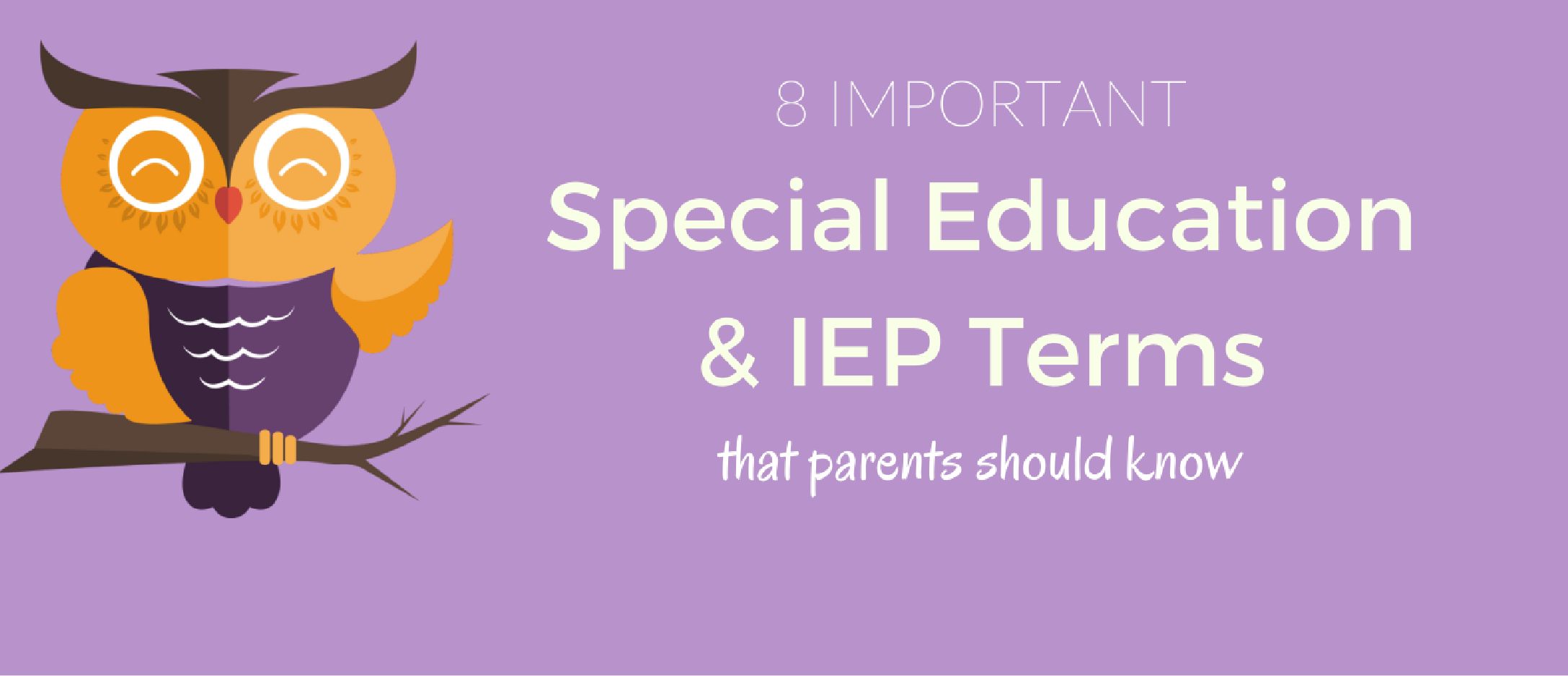
Special education and the process of developing an Individual Education Plan (IEP) can sometimes seem like it involves a foreign language. There are so many terms and acronyms! Parents often find this very frustrating during their meetings with the school, so we’ve compiled this list of key terms to help you learn the “IEP lingo” and better understand the information being presented to you:
1. Identification, Placement and Review Committee (IPRC):
A group of at least three, including a principal or supervisory officer from a board of education, that evaluates and decides if a student meets the criteria of being an “exceptional pupil” based on the Education Act and each school board’s identification criteria. If a student has been identified as exceptional the IPRC then determines the best educational placement and special education programs and services that should be provided in order to meet the student’s needs. In addition, an Individual Education Plan must be developed for the student within 30 days of identification at an IPRC.
2. Exceptional Student:
An exceptional student is a student who has been formally identified by an Identification and Placement Review Committee (IPRC) in order to receive appropriate special education programs and services. An exceptional student has significant needs in the areas of behaviour, communication, intellectual, physical or multiple disabilities and meets the provincial and school board criteria for identification. Approved exceptionalities include Behaviour, Learning Disability, Giftedness, etc. A student who has been identified as exceptional by an IPRC must have an Individual Education Plan (IEP) and must be provided with the supports and services required to meet the exceptional needs. However, parents should know that it is not necessary for a child to be formally identified as an exceptional pupil by the IPRC in order for him/her to receive a special education program or special education services.
3. Individual Education Plan (IEP):
The IEP is the written plan describing the special education program, assistance and/or services required for a particular student, based on a thorough assessment of the student’s learning strengths and needs. The IEP is developed by the school, in consultation with the parents and, if needed, with other professionals, such as psychologists or psychoeducational consultants. It must include specific educational expectations based on the curriculum, an outline of the special education program and services that will be received, and a statement about the methods by which the student’ s progress is reviewed. Regulation 181/98 requires that an IEP be developed for every student identified as exceptional by an Identification, Placement and Review Committee (IPRC). In addition, an IEP may be developed for a student who has not been formally identified as exceptional but who requires a special education program and/or services. Parents must receive a copy of the IEP.
4. Accommodation:
Changes made to the way the student is taught and assessed. Accommodations refer to the special teaching and assessment strategies, human supports, and/or individualized equipment required to enable a student to learn and to demonstrate learning. These are strategies that help a student meet the provincial curriculum expectations of his/her grade-level; accommodations DO NOT alter the provincial curriculum expectations for the grade. Examples of accommodations include extra time given to complete assignments and/or tests.
5. Modification:
Changes made in the age-appropriate grade-level expectations for a subject or course in order to meet a student’s learning needs. Modifications refer to the changes or alternations of learning expectations made to the provincial curriculum that are different from the age and/or grade placement of the student. Modified expectations may be drawn from a different grade level, or they may include increases or decreases o the number and/or complexity of the grade-level expectations.
6. Annual Program Goal(s):
An annual program goal is a statement that describes what a student can reasonably be expected to accomplish by the end of the school year in a particular subject, taking into account the student’s strengths, needs, and current level of achievement. It represents a reasonable target, not a rigid requirement. Annual program goals may need to be revised as the teacher develops a better understanding of the student’s learning processes and/or as the student’s rate of acquisition of knowledge and skills changes.
7. Special Education Resource Teacher (SERT):
A SERT is a specially trained teacher who assists in developing IEPs for each individual student. A large part of a SERT’s job is communicating and working with others involved in a child’s development, including parents, classroom teachers, psychologists, social workers. On a daily basis, the SERT collaborates with classroom teachers to support inclusion of exceptional students within the classroom.
8. Ontario School Record (OSR):
This is the student file that contains all documents in relation to your child’s educational progress through schools in Ontario. The contents of the OSR include all of your child’s report cards, transcripts, psychoeducational assessment reports, documentation file (including an IEP and statement of decision/recommendations of an IPRC), as well as any additional information identified as being conducive to the improvement of the instruction of the student. Your child’s teacher(s), the principal, and others working with your child have access to the OSR. Parents can ask to see the contents of the OSR by contacting the Principal.
